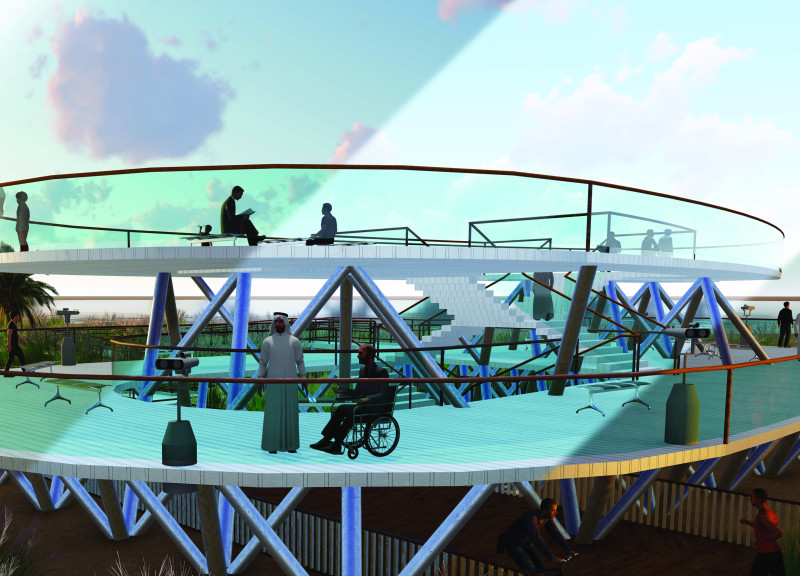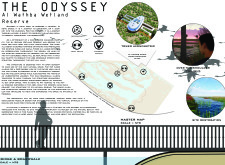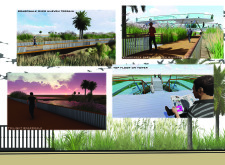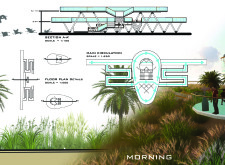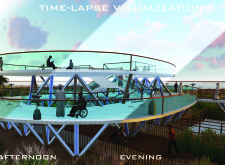5 key facts about this project
The Al Wathba Wetland Reserve is a designed space that highlights the relationship between humans and nature. Located in a restored area that once served as a wastewater management facility, it now supports various bird and plant species. The design encourages visitors to explore the landscape, focusing on providing an enriching experience while protecting the delicate ecosystem around them. It seeks to draw attention to the beauty of the wetlands, fostering a deeper appreciation for this unique environment.
Design Integration
The layout of the reserve emphasizes an open concept that makes the most of the natural surroundings. One of the main features is the top floor, which gives clear, wide views of the landscape. This space allows visitors to observe and connect with the environment from an elevated position. The main floor is designed for accessibility, welcoming everyone and promoting ease of movement throughout the area.
Biodiversity and Preservation
A central goal is to support the rich plant and animal life in the wetlands. The design plan includes efforts to keep as much existing vegetation as possible. When areas are disturbed, there are plans to replant using native species. This thoughtful approach aims to lessen any negative effects from construction, helping to maintain the ecological balance of the reserve.
Architectural Aesthetics
The structure uses industrial design features, such as exposed truss support systems, which reflect the local history of metalworking. These industrial elements are balanced with wooden handrails that link the built environment to the surrounding nature. The careful combination of these materials enhances the overall look while fulfilling practical needs, making the space both inviting and functional.
Circulation and Experience
The main boardwalk acts as a key pathway, guiding visitors through the reserve. Its gentle curves invite exploration and interaction with the natural landscape. Each step taken on the boardwalk encourages a connection with the environment, making the journey feel both engaging and meaningful.
The vertical spindles on the railings are made from stainless steel, offering safety without overpowering the design. Their clean lines contribute to a sense of clarity within the space, allowing visitors to feel at ease as they navigate their surroundings.


